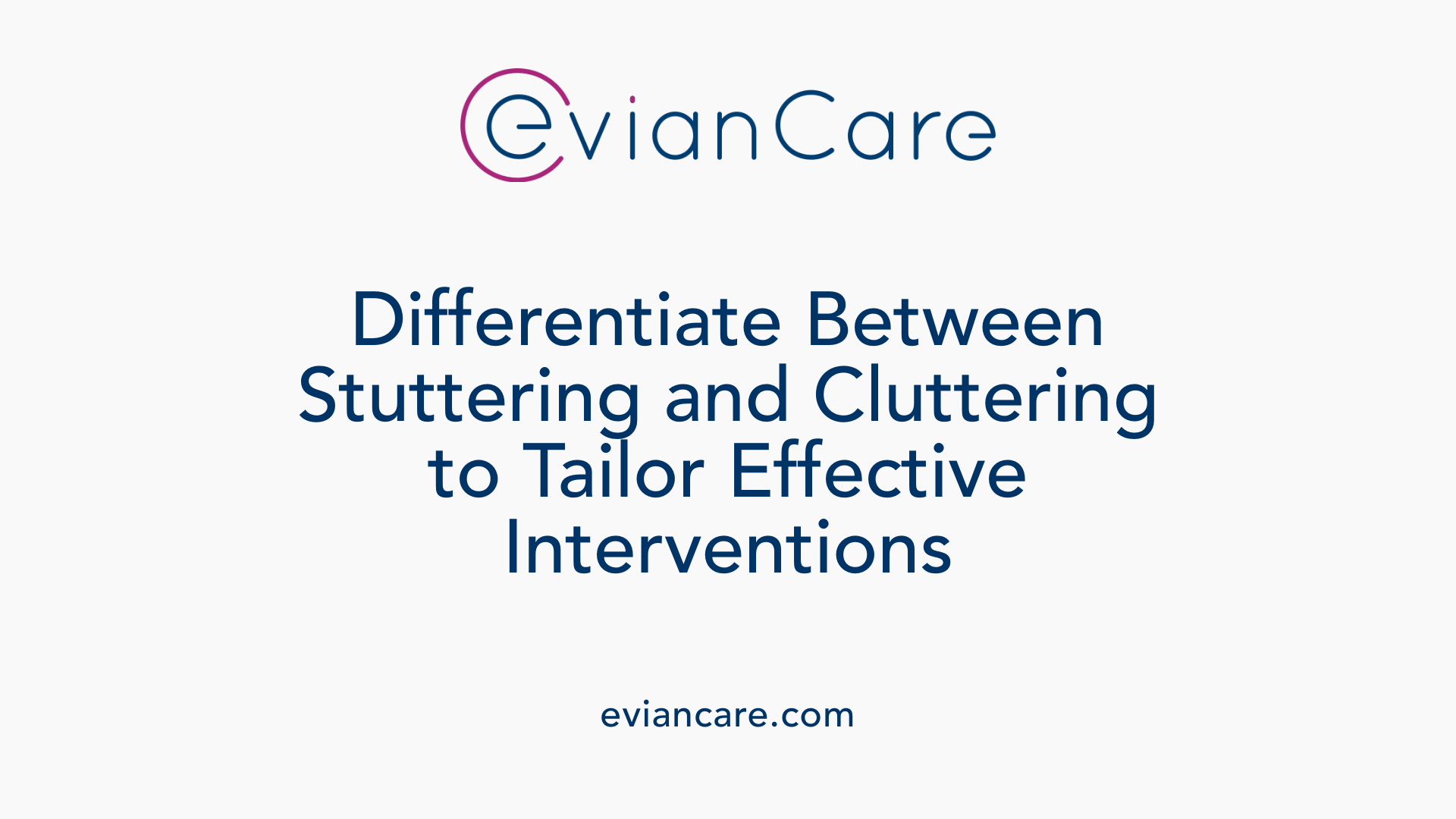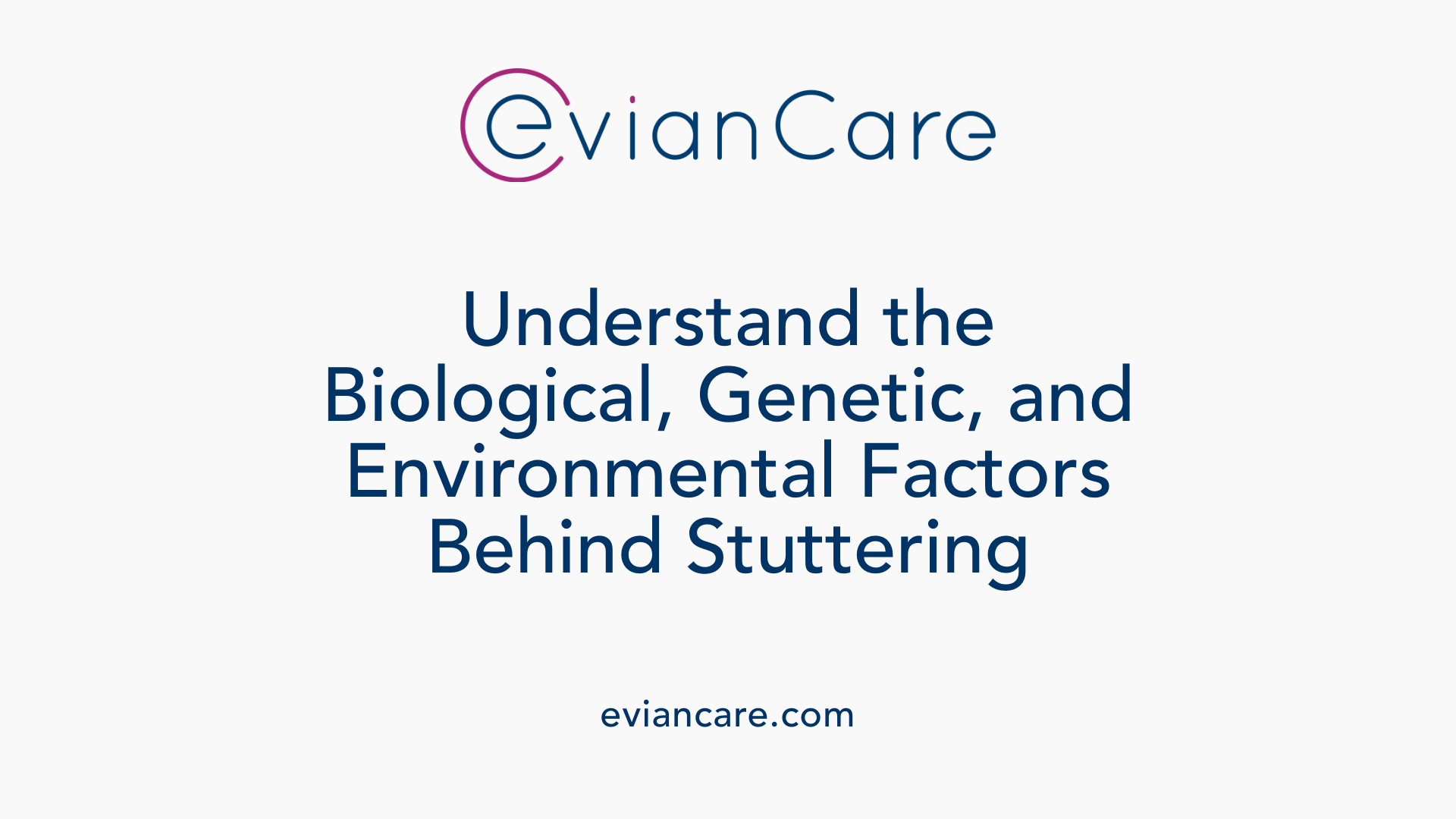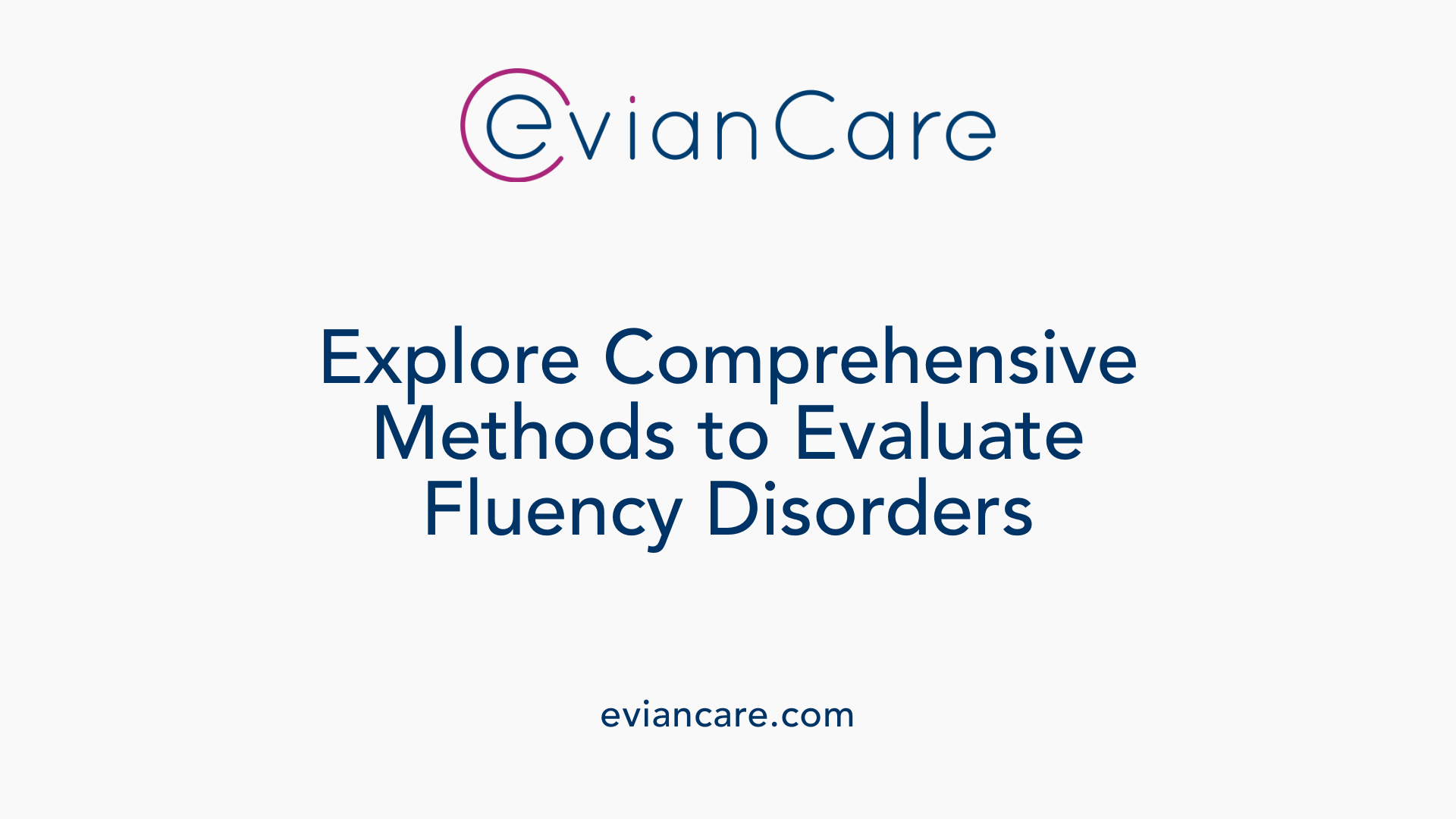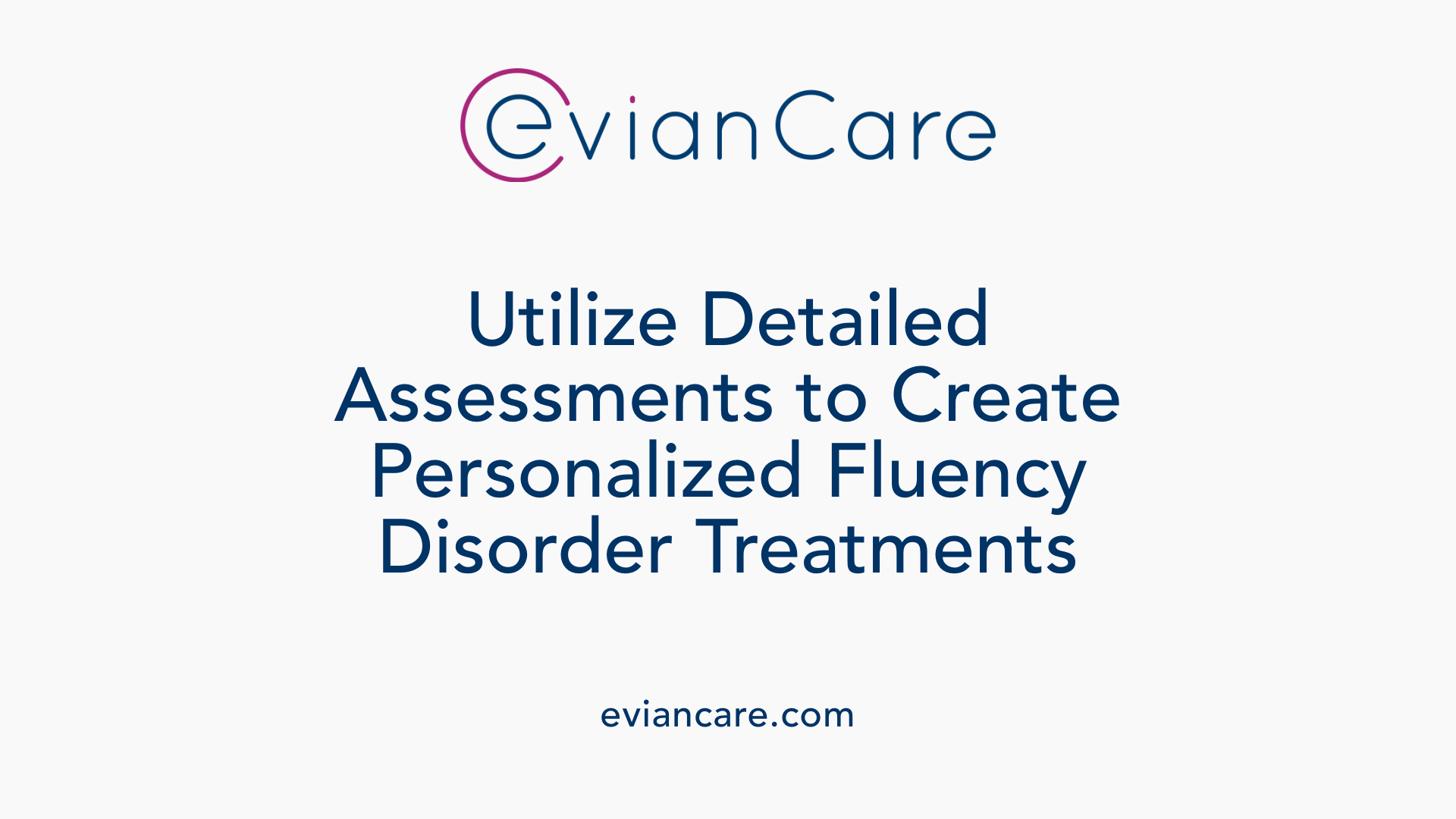
Understanding Fluency Disorders and Their Impact
Fluency disorders such as stuttering and cluttering significantly affect communication, leading to frustration and social barriers for individuals. Fluency refers to the smooth, continuous flow of speech, but disruptions like hesitation, repetitions, and tension characterize speech disfluencies. While typical disfluencies are common in everyday speech, persistent disruptions interfere with effective communication. This article explores the nature of these disorders, their causes, assessment methods, and effective therapy strategies to enhance fluency and confidence.
Types of Fluency Disorders: Stuttering and Cluttering

What are the common types of fluency disorders such as stuttering and cluttering?
Fluency disorders are disruptions in the flow of speech that can affect communication and social interaction. The two most recognized types are stuttering and cluttering.
Stuttering is characterized by involuntary disruptions known as disfluencies, which include repetitions of sounds, syllables, or words, prolongations of sounds, and blocks where no sound is produced. Often, individuals who stutter display secondary behaviors such as physical tension, eye blinking, or facial grimacing. Typically, stuttering begins in childhood, with around 95% starting before age four. Many children recover naturally, with recovery rates estimated between 88-91%. Factors like genetics, neurophysiological differences, and environmental stressors contribute to its development.
On the other hand, cluttering involves a perceived rapid and irregular speech pattern that can sound disorganized. Common features include excessive disfluencies, irregular pausing, coarticulation over speed (over-coarticulated speech), and speech maze behaviors—like frequent pauses or revisions within sentences. Clutterers may also omit sounds or syllables and exhibit unusual prosody, which affects the natural rhythm and clarity of speech. Unlike stuttering, individuals with cluttering may not be fully aware of their disorganized speech, making it harder to identify.
Both disorders can coexist, but their distinctions lie in their speech behaviors and underlying patterns. Treatment approaches often focus on slowing speech rate, increasing awareness of speech patterns, and applying specific speech modification techniques. Speech-language pathologists tailor interventions to address each condition's unique features, emphasizing not only reducing disfluencies but also fostering confidence and effective communication skills.
Defining and Recognizing Stuttering: Symptoms and Characteristics

What are the definitions, symptoms, and characteristics of stuttering?
Stuttering is a type of fluency disorder that involves disruptions in the smooth flow of speech. These disruptions can manifest as involuntary repetitions of sounds or words, prolongations of speech sounds, or blocks and pauses that momentarily halt speech production. Typically, stuttering begins in childhood, most often between ages 2 and 6, and can fluctuate in severity depending on various factors like stress, social context, or emotional state.
Individuals who stutter often display physical signs such as tension in the speech muscles, eye blinking, head nodding, or other secondary behaviors that accompany disfluencies. They might also avoid certain words or speaking situations that could trigger or worsen stuttering episodes.
The causes of stuttering are complex and involve a mix of genetic predispositions, neurophysiological differences, and environmental influences like family interactions and stress levels. While many children recover naturally—estimated at around 88-91%—others may experience persistent speech disruptions into adulthood.
Symptoms are not only observable behaviors but also include covert reactions like avoidance, which impact communication effectiveness and emotional health. The variability of symptoms and their impact highlights that stuttering is more than just disfluent speech; it encompasses emotional, cognitive, and behavioral responses that can influence an individual's confidence and social participation.
Overall, recognizing stuttering involves identifying these speech disruptions, physical signs, and emotional reactions. Early diagnosis and understanding of these characteristics can lead to tailored intervention strategies that support better communication and emotional well-being.
Underlying Causes and Influencing Factors of Stuttering

What causes stuttering and what are the contributing factors?
Stuttering is a complex speech disorder with multiple contributing causes. It primarily stems from neurological, genetic, and developmental factors that disrupt normal speech production processes.
Research shows that individuals who stutter often exhibit structural and functional differences in brain areas crucial for speech, such as Broca’s and Wernicke’s regions. These brain regions are responsible for language and speech regulation. Altered hemispheric activity and disrupted connectivity within speech-related neural circuits also play a role in the development of stuttering.
Genetics significantly influence stuttering. Many cases run in families, indicating that certain gene mutations increase susceptibility. Family history can heighten the risk, and specific genetic markers have been identified that are associated with increased likelihoods of developing the disorder.
Environmental factors are also important, especially in early childhood. Emotional stress, family dynamics, and anxiety can exacerbate stuttering or trigger its onset. For example, stressful life events or high-pressure situations may intensify disfluencies.
On a neurochemical level, imbalances such as increased dopamine activity have been linked to stuttering. These neurochemical irregularities may interfere with neural pathways involved in smooth speech coordination.
Overall, the causes of stuttering are multifaceted, involving an interplay between brain structure and function, genetic disposition, and environmental influences. This complexity underscores the importance of individualized assessment and tailored intervention strategies for those affected.
| Cause Category | Specific Factors | Additional Details |
|---|---|---|
| Brain Structure & Function | Differences in Broca's and Wernicke's areas | Impact speech planning and processing |
| Altered hemispheric activity | Disrupted neural communication affecting speech production | |
| Genetics | Family history and genetic mutations | Increases likelihood of stuttering |
| Environmental Influences | Emotional stress, family environment | Can trigger or worsen symptoms |
| Neurochemical Factors | Elevated dopamine levels | May affect neural circuits involved in speech motor control |
Understanding these contributing elements helps in designing effective treatment plans, emphasizing a holistic approach that considers biological, psychological, and social factors.
Assessment Strategies for Fluency Disorders

What assessment methods are used to evaluate fluency disorders?
Evaluating fluency disorders requires a comprehensive approach that captures both speech behaviors and emotional responses. Clinicians typically use a combination of direct observation, speech sample analysis, standardized assessments, and personal interviews to gather detailed information.
One common method involves analyzing speech samples collected from different speaking situations, such as spontaneous conversations, reading tasks, or monologues. These samples help identify specific disfluency types like repetitions, prolongations, or blocks, and assess their frequency and severity.
Standardized tools are essential for quantifying disfluencies and understanding their impact. The Stuttering Severity Instrument-4 (SSI-4) is widely used to measure the severity of stuttering, including physical tension and duration, providing scores that reflect the overall impact on speech. The Overall Assessment of the Speaker’s Experience of Stuttering (OASES) offers a broader perspective by evaluating how stuttering affects daily life, social participation, and emotional well-being.
Besides analyzing speech, assessment includes understanding emotional and social effects. Clinicians explore reactions such as frustration, anxiety, and avoidance behaviors, which can influence the individual's communication and quality of life.
Interviews with the person who stutters, family members, and educators can reveal how stuttering manifests in different environments and how it impacts relationships and activities.
By gathering a mixture of quantitative data—like disfluency counts and severity scores—and qualitative insights into personal experiences, therapists can tailor treatment strategies effectively.
Overall, assessment in fluency disorders aims to build a complete profile that informs personalized intervention, focusing not just on speech mechanics but also on emotional health and social participation.
| Assessment Component | Methods Used | Purpose | Additional Details |
|---|---|---|---|
| Speech sample analysis | Spontaneous speech, reading, monologue | Identify types, frequency, and severity of disfluencies | Provides data on disfluency patterns |
| Standardized tools | SSI-4, OASES | Quantify severity, assess functional impact | Reliable, validated measures |
| Emotional and social impact | Interviews, questionnaires | Understand feelings, reactions, and social effects | Guides holistic treatment planning |
| Observation & reports | Observations, collateral reports | Document behaviors, secondary behaviors | Adds contextual information |
Using these varied assessment methods ensures a thorough understanding of each person’s unique fluency profile. This comprehensive evaluation is vital in designing effective, person-centered treatment plans, ultimately supporting better communication and emotional well-being.
Goals and Benefits of Speech Therapy in Fluency Disorders
What are the goals and benefits of speech therapy for individuals who stutter?
Speech therapy aims to help people who stutter improve their ability to communicate comfortably and effectively. The primary goals are to reduce the severity and frequency of disfluencies, such as repetitions, prolongations, or blocks, and to support a positive attitude toward speaking.
Therapists work with clients to develop strategies that control speech rate, manage tension, and produce smoother speech patterns. An essential part of therapy involves helping individuals build confidence and reduce feelings of fear or shame associated with stuttering.
The benefits extend beyond just clearer speech. Many individuals experience improved self-esteem, greater social participation, and increased willingness to engage in conversations and activities that they might have avoided previously.
Modern speech therapy emphasizes acceptance of speech differences, allowing clients to embrace their unique speaking style without pressure to eliminate stuttering entirely.
Techniques often include both physical adjustments, like slowed speech and gentle onsets, and cognitive or emotional support, such as addressing negative beliefs and feelings about stuttering.
The overall goal is to enhance quality of life by empowering individuals to communicate authentically and confidently. This holistic approach not only improves speech but also fosters resilience, self-advocacy, and social participation.
By focusing on effective communication and emotional well-being, speech therapy helps individuals stutter less conspicuously and live more fulfilling lives—free from the fear of speaking and social withdrawal.
Therapeutic Techniques and Approaches for Fluency Enhancement
What speech therapy techniques are effective for improving fluency and reducing stuttering?
Speech therapy offers various effective methods to help individuals control disfluencies and increase speaking confidence. One widely used approach is fluency shaping, which focuses on teaching techniques like easy onsets, gentle initiation of sounds, and prolonged syllables. These methods aim to slow down speech, reduce tension, and promote more rhythmical and effortless speaking.
Another important set of techniques is stuttering modification, which helps individuals manage specific disfluencies as they happen. These include strategies like pullouts or ease outs, which involve relaxing and releasing tension during a stuttering moment to complete words more smoothly. Cancellations, a technique used after a disfluency, involve pausing briefly, then softly repeating the word with less tension.
Practicing syllable-timed speech encourages consistent pacing, making the flow of speech more predictable and easier to control. Additionally, relaxation and breathing exercises can help reduce speech-related anxiety and physical tension.
Role-playing social situations in therapy sessions builds confidence and prepares individuals for real-life interactions. The therapy is personalized, often combining several of these techniques based on the individual's needs and age.
Supporting environments, including caregiver involvement and practice outside therapy, reinforce these strategies. This comprehensive approach has been proven to significantly enhance fluency, helping individuals speak more confidently in everyday situations and reducing the impact of stuttering on their lives.
Distinction Between Fluency Shaping and Stuttering Modification
Goals of Both Approaches
Fluency shaping and stuttering modification are two common strategies in speech therapy for managing disfluencies. The primary aim of fluency shaping is to develop a new, more fluent speech pattern by teaching individuals techniques that prevent stuttering from occurring. This approach often emphasizes controlling the rate of speech, slowing down, and using smooth, gentle articulatory movements.
Stuttering modification, on the other hand, focuses on managing and reducing the struggle and tension during disfluencies. It encourages acceptance of disfluencies as part of speech and aims to make them less severe and more controllable. The goal is to help individuals speak more easily during moments of stuttering, reducing fear and avoidance behaviors.
Core Techniques Used
Fluency shaping techniques include methods such as slow and deliberate speech, prolonging sounds, passive airflow, gentle onsets, and continuous phonation. These techniques are designed to produce a seamless flow of speech and are often practiced systematically to establish new speech habits.
In contrast, stuttering modification employs techniques like cancellation, pull-out, and preparatory sets. These allow the speaker to modify their reaction during a disfluency, reduce tension, and physically manage the moment of stuttering. For example, a person may learn to pause after a stutter (cancellation) or ease out of a stutter (pull-out) to lessen severity.
Application Differences
Fluency shaping is typically used when the goal is to achieve global, sustained fluency across various speaking situations, often in a structured manner. It is well-suited for individuals who want to decrease the overall amount of disfluency in their speech.
Stuttering modification might be preferred for those who are aiming to stutter more easily and with less tension during certain speech moments. It often involves more acceptance and psychological adjustment, helping individuals reduce fear and avoidance of speaking.
Many clinicians combine both approaches to address different aspects of stuttering, tailoring treatment plans to the individual’s specific needs.
| Aspect | Fluency Shaping | Stuttering Modification | How They Differ |
|---|---|---|---|
| Main Goal | Develop fluent speech | Manage disfluencies and reduce tension | Emphasis on speech pattern alteration vs. emotional management |
| Techniques | Slow speech, prolongation, gentle onset | Cancellation, pull-out, preparatory sets | Systematic behavior change vs. moment-to-moment adjustments |
| Application | Global fluency improvement | Moment-to-moment disfluency management | Long-term speech pattern vs. managing flustered moments |
| Suitability | Those seeking overall fluency | Those wanting easier disfluency control | Different focuses for different needs |
Both approaches are rooted in behavioral principles, but their application depends on the individual’s goals, preferences, and the nature of their stuttering. Combining strategies allows for a comprehensive approach that addresses both the physical and emotional aspects of fluency disorders.
Assessment Methods in Detail and Treatment Planning

What assessment methods are used to evaluate fluency disorders?
Evaluating fluency disorders requires a detailed and holistic approach. Clinicians utilize a combination of standardized tools, observational techniques, and personal histories to understand the client's specific condition.
Standardized assessments like the Stuttering Severity Instrument-4 (SSI-4) measure the frequency and types of disfluencies, along with their impact on communication. The Overall Assessment of the Speaker’s Experience of Stuttering (OASES) provides insights into the emotional, social, and functional effects of stuttering on an individual.
Beyond these tools, data collection involves analyzing speech samples gathered from various contexts such as spontaneous conversation, reading tasks, and monologue speech. These samples help identify disfluency types—like repetitions, prolongations, and blocks—and their severity.
Assessment also includes exploring emotional reactions and behavioral responses, including secondary behaviors like physical tension or avoidance strategies. Interviews and case histories help uncover personal and environmental factors influencing stuttering, such as family dynamics, stress levels, and societal attitudes.
This comprehensive approach combines quantitative measures with qualitative insights, ensuring that treatment planning is tailored to each individual’s unique experiences. The goal is to develop a program that acknowledges the physical disfluencies and addresses emotional and social impacts.
How do clinicians develop personalized therapy plans?
Personalized treatment plans are crafted based on detailed assessments. Therapists first identify the specific disfluency patterns, severity, and the emotional reactions associated with stuttering.
They consider the individual’s age, communication needs, personal goals, and cultural background. For children, treatment may involve parents and focus on environmental modifications and early interventions like the Lidcombe Program.
For older children and adults, therapy often combines fluency shaping and stuttering modification techniques, tailored to their life situations and comfort levels.
A person-centered approach emphasizes aligning therapy strategies with the individual's preferences and stage of change. This involves shared decision-making and respecting cultural and linguistic factors that influence speech and attitudes.
Clinicians also incorporate psychological support, such as cognitive-behavioral therapy, to address negative feelings and societal pressures related to stuttering.
The clinical plan includes setting realistic, measurable goals in areas like reducing disfluency frequency, improving emotional well-being, and enhancing social participation.
How is continuous monitoring and adjustment conducted?
Effective management of fluency disorders necessitates ongoing evaluation. Regular monitoring helps track progress and adapt therapy methods as needed.
Clinicians may conduct periodic speech sample analyses, reassess using standardized tools, and solicit feedback from clients about their experiences and confidence levels.
Adjustments include modifying techniques, increasing or decreasing therapy intensity, and introducing new strategies such as mindfulness or self-disclosure activities.
Open communication and flexible planning ensure that therapy remains aligned with the individual’s evolving needs and life circumstances. This dynamic process optimizes outcomes and promotes sustained fluency improvements.
| Assessment Focus | Methods Used | Purpose |
|---|---|---|
| Speech Behavior | Speech samples, SSI-4, Observation | Identify disfluency types & severity |
| Emotional Impact | OASES, Interviews, Self-report | Understand emotional reactions |
| Social & Environmental Factors | Case histories, Environment analysis | Tailor environmental modifications |
| Treatment Monitoring | Regular reassessment, Feedback sessions | Track progress & refine therapy |
Understanding and integrating these assessment components facilitate a personalized, adaptive approach to managing fluency disorders, ensuring individuals receive the most effective care suited to their unique needs.
Optimizing the Outcomes of Speech Therapy
What is the expected process and outcome of speech therapy for fluency improvement?
Speech therapy for fluency enhancement is a personalized journey guided by a speech-language pathologist (SLP). It starts with a thorough assessment to understand the individual’s specific fluency disorder, whether it’s stuttering or cluttering. This comprehensive evaluation includes analyzing speech samples, emotional responses, and social impact.
Based on this assessment, the therapist develops tailored treatment strategies. These can involve a variety of techniques such as fluency shaping, which focuses on controlling speech rate and managing breath support, and stuttering modification, aimed at reducing the severity and frequency of disfluencies.
In addition, cognitive-behavioral approaches may be incorporated to address negative emotions and build confidence, helping individuals cope better with potential social or emotional challenges. Therapy sessions often emphasize teaching self-monitoring skills, proper breathing techniques, gentle speech onsets, and controlled pacing.
The process is flexible, adapting to the person’s age, responsiveness, and specific needs. For children, early intervention might include parent training and environment modifications, while adults may focus more on acceptance and effective communication strategies.
The goals of therapy include reducing the number and severity of disfluencies, increasing overall speech fluency, and boosting self-confidence. Improved social participation and quality of life are also fundamental outcomes. It’s important to note that ongoing support, adjustments, and sometimes environmental modifications help sustain these benefits over time.
In summary, effective speech therapy blends technical skill development with emotional support, leading to better communication outcomes and an increased sense of confidence in various speaking situations.
Supporting Long-term Fluency and Confidence
Effective management of fluency disorders through speech therapy requires a comprehensive, personalized approach that includes assessment, tailored techniques, emotional support, and ongoing practice. Combining methods like fluency shaping, stuttering modification, and psychological interventions fosters sustainable improvements. Early intervention, continuous support, and involvement of family and community resources are vital for success. Empowering individuals to accept and manage their speech differences enhances their confidence and communication effectiveness, contributing to better participation in social, educational, and professional spheres. Ultimately, speech therapy not only reduces disfluencies but also improves overall quality of life.
References
- Stuttering, Cluttering, and Fluency - ASHA
- Stuttering and Fluency - Speech & Hearing Sciences
- Stuttering: 6 Fluency-Shaping Techniques
- How to Fix Stuttering: Proven Strategies for Effective Communication
- Understanding the Speaker's Experience of Stuttering Can Improve ...
- Fluency Strategies: A Cheat Sheet to Treatment
- 7 Strategies to Help Improve Fluency and a Stutter - Expressable
- Is Online Speech Therapy Effective for Stuttering in Kids?












